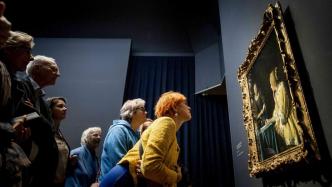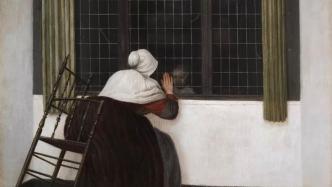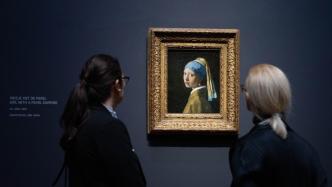
At dusk, the subtle orange on the horizon gradually rises, becomes royal blue, and then indigo, with a few boats moored at the pier, and behind a wide body of water, the steep gables of the city buildings, the steeples of the churches... all this is very impressive. Traveling back to 1660, an artist is here, drawing what he saw.
He was Vermeer (1632-1675), not a celebrity then and still not for the next two centuries. But today, Vermeer's name is connected with Delft, and his "Delft View" plays an important role in the history of art. Starting from Delft, looking for traces of Vermeer, going to The Hague, until the Rijksmuseum in Amsterdam where the "Vermeer" exhibition is being held, connecting his creative field, and exploring how he was discovered two centuries after his death.
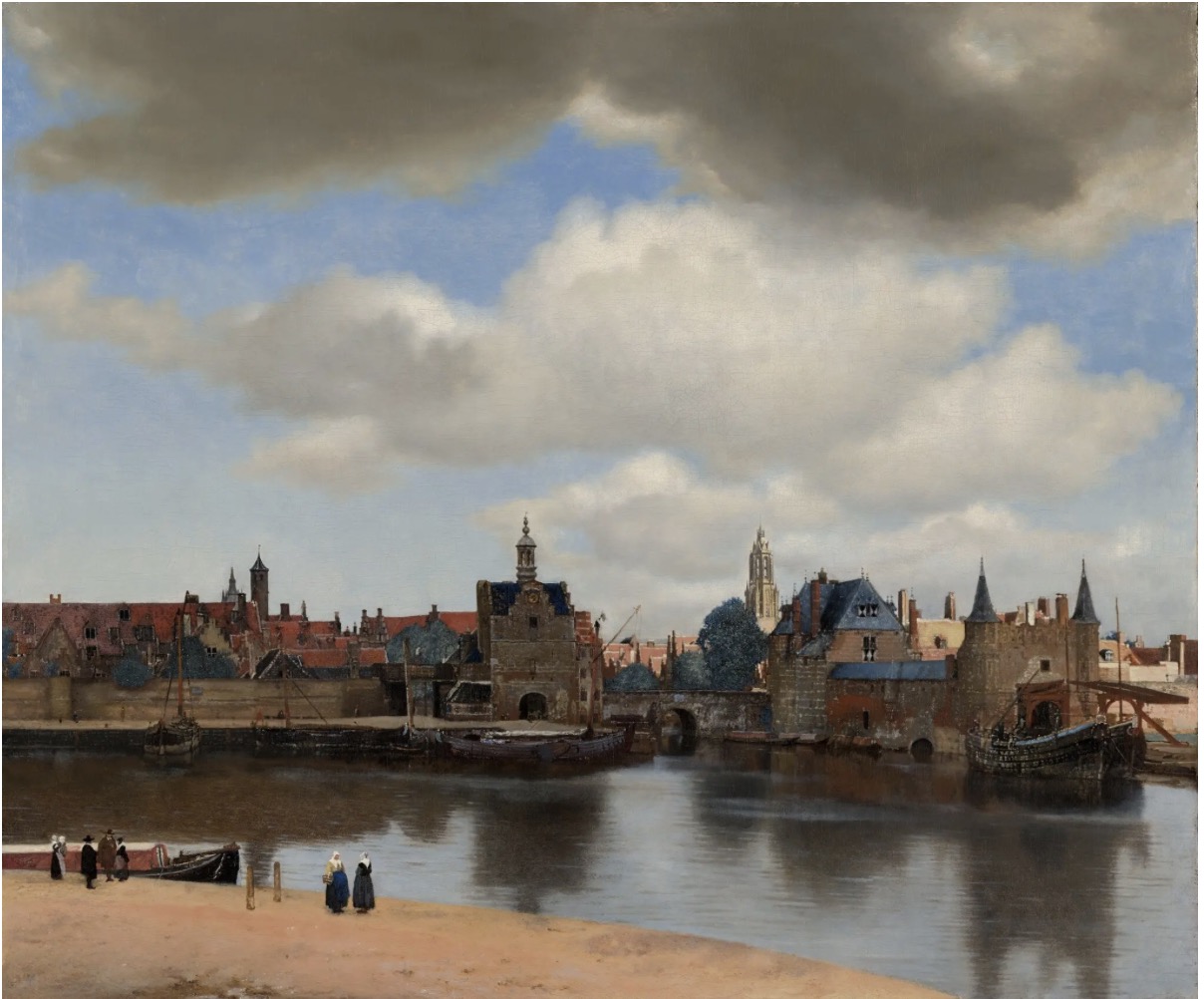
Vermeer, View of Delft, 1660-1661, Mauritshuis, The Hague; Vermeer depicts his hometown
Delft is a small Dutch city with a population of about 100,000, located only 40 miles southwest of the Dutch capital Amsterdam. It was founded in 1246 and gradually developed into a center of ceramics, and in the early 17th century it became the center of fine arts in the Dutch Golden Age. Perhaps it was the light that inspired the painter—the vast northern sky reflected in the canal, as well as the man in the black top hat and the pale, mysterious woman in the dark interior.
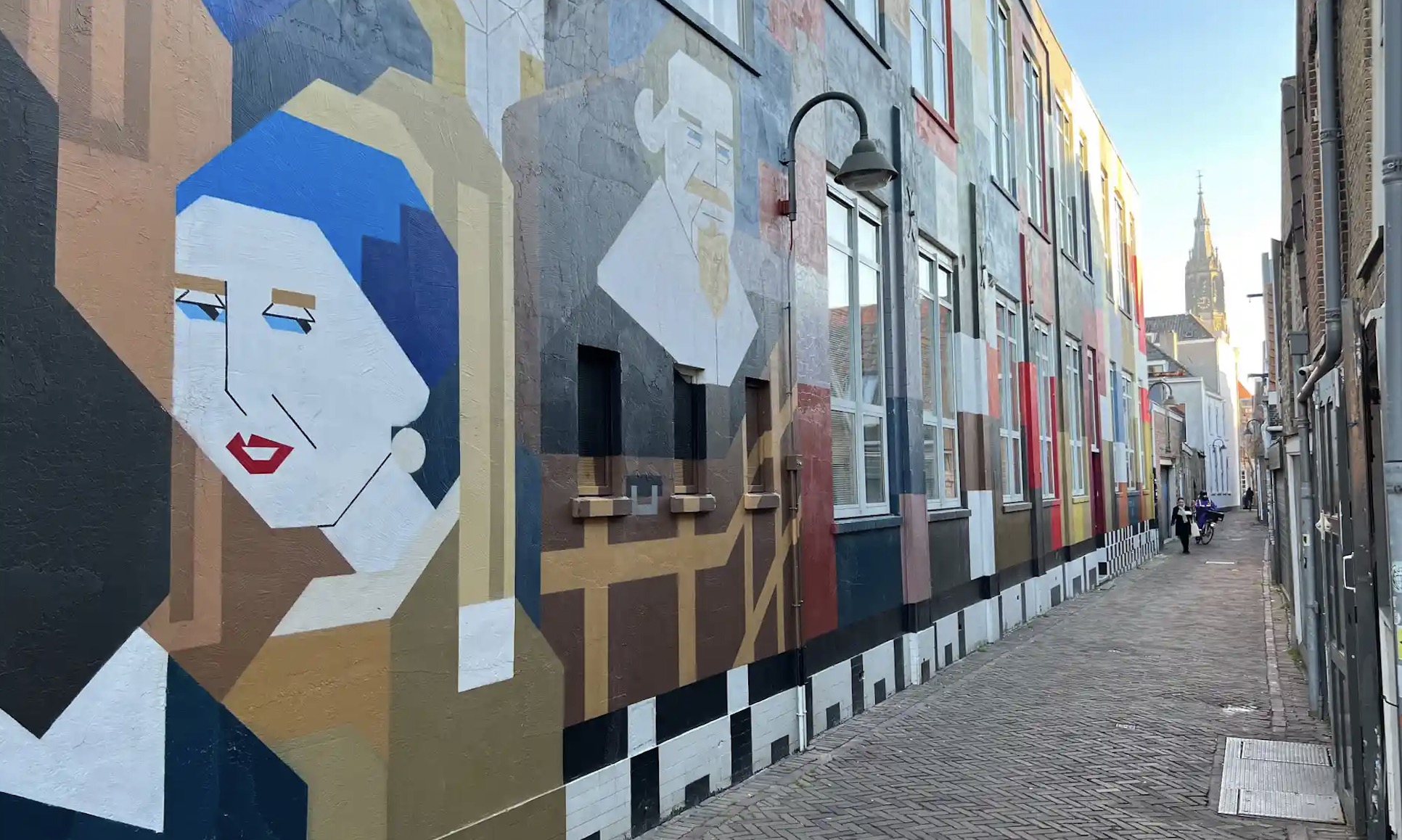
An alley leading into the old town of Delft.
Enter the old town, a maze of narrow canals and arched metal bridges. Lights are on in the pub, where off-duty office workers enjoy beer and snacks, and the shops and restaurants still maintain their 17th-century dimensions. On one side of the city center is the market, on the other side is the former residence of the Vermeer family; nearby is the former city hall, which is now an art center dedicated to displaying Vermeer and his works.
Little is known about Vermeer, who studied under him, or how many paintings he actually produced; no sketches, letters, or diaries survive. All that is known is that he lived a comfortable life in Delft, died in poverty in 1675, and was forgotten a century later.

The man standing on the left in Vermeer's "The Bustard" is considered to be Vermeer's self-portrait
Today, the "Vermeer" exhibition at the Rijksmuseum in Amsterdam, which brings together 28 of his 37 known works for the first time in history, is being called an epic moment that even Vermeer himself may have drawn from Never had this experience.
However, to explore the stories behind Vermeer's works, it is in Delft.

The evening in Delft is like that painted by Vermeer.
In the old town of Delft, Vermeer's main living area is concentrated around the market. Behind his tomb in Delft's Old Church (Oude Kerk) is the Museum Prinsenhof Delft, which is currently exhibiting "Vermeer's Delft", a biography of Vermeer, For the first time, connections and his relationship with the city of Delft are at the center of the exhibition narrative. The ceramics, tapestries, archives, etc. produced in Delft in the same period as Vermeer together paint a picture of the artistic and social atmosphere of Delft in the 17th century.

According to Pieter Roelofs, one of the curators of the "Vermeer" exhibition at the Rijksmuseum in Amsterdam, in the catalog of the exhibition, Maria de Knuitt was Vermeer's close neighbor. She began acquiring Vermeer around 1657, during which time Vermeer's subject matter shifted from religious and mythological scenes to interior decoration. In 17th-century Holland, women were largely confined to domestic roles. As part of home decoration, women have the initiative to decorate the home.
De Knuitt owns at least 20 of the approximately 37 known paintings by Vermeer in existence, including his iconic "Milkmaid" and "Girl with a Pearl Earring." The "Vermeer" exhibition brings together 14 works once collected by De Knuitt.
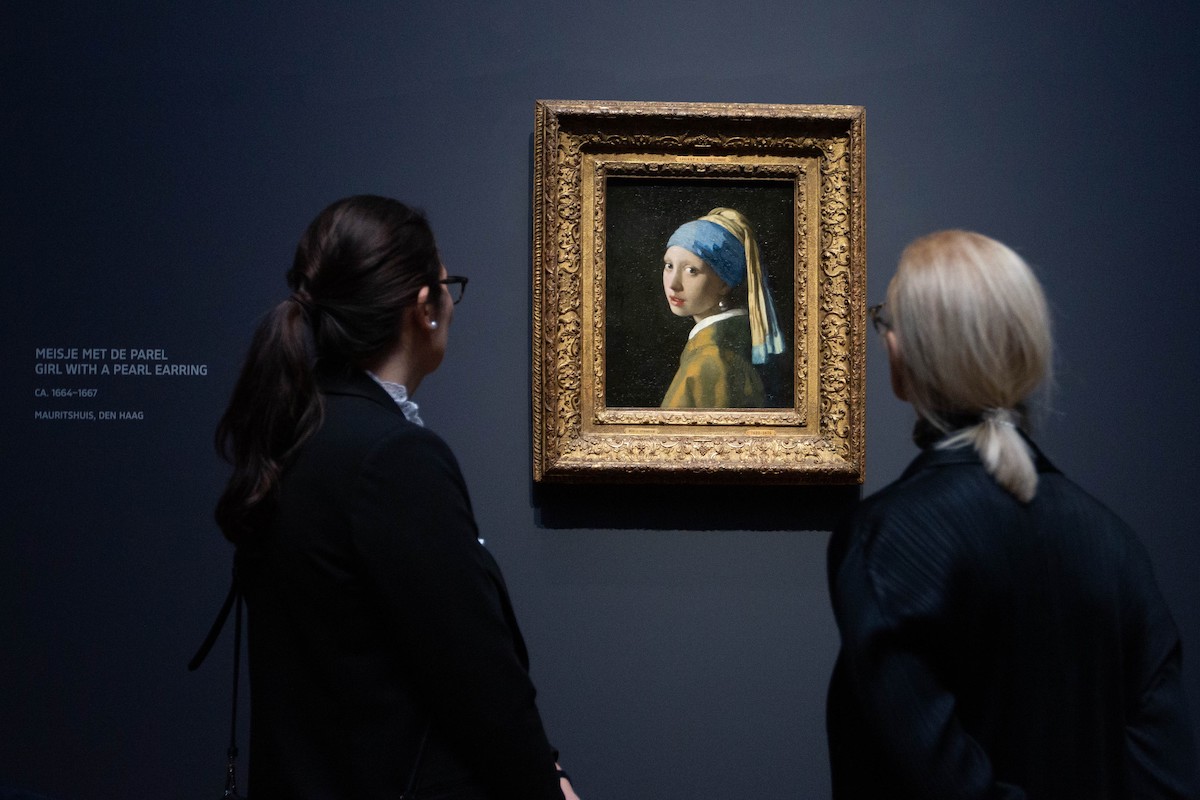
Exhibition view, "Girl with a Pearl Earring"
Vermeer was not only an artist, but also a human being: husband, son-in-law, father of 15 children and innkeeper. He lives in a world of wonder and chaos. There are two bullet holes in the staircase inside the Prince Museum in Delft. This is 1584, the "assassins" sent by King Philip II of Spain assassinated William I (William van Orange), the first governor of the Dutch Republic. He kept silent about Delan's plan and was called "Silent William". This was also the first time in history that a country's leader was assassinated with a gun.
Another work in the "Vermeer's Delft" exhibition depicts the gunpowder explosion that destroyed the entire Delft suburb in 1654, killing more than a hundred people, including a young artist. They found Carel Fabritius (died 12 October 1654) dying in the ruins of his studio.
Many people suspected that he was Vermeer's teacher, but the explosion destroyed all the materials that could be proved. A Fabrizias painting of a bird chained to a tin box reveals a vague heritage.

Carrier Fabritius, The Goldfinch, Mauritshuis, The Hague, suspected teacher of Vermeer.
In that exciting time, the allegorical and colorful Catholic world was being challenged by a new aesthetic of austerity, one that the new Dutch Republic called its own. Enter Delft's magnificent New Church (Nieuwe Kerk), where Vermeer was baptized and "William the Silent" is buried, surrounded by desolation. During the Iconoclasm of the 16th century, ornate decoration was stripped to suit Protestant views, and some artists embraced the sober and austere aesthetic of the common people. There used to be an inn (now a private residence) called "The Flying Fox" by the old canals of Delft, which may be where Vermeer grew up. It is known that his father was an art dealer and innkeeper, and the window of his studio should look out on a narrow street along a canal. At sunset, Vermeer might stop work to buy some schnitzel or fried cheese nearby.
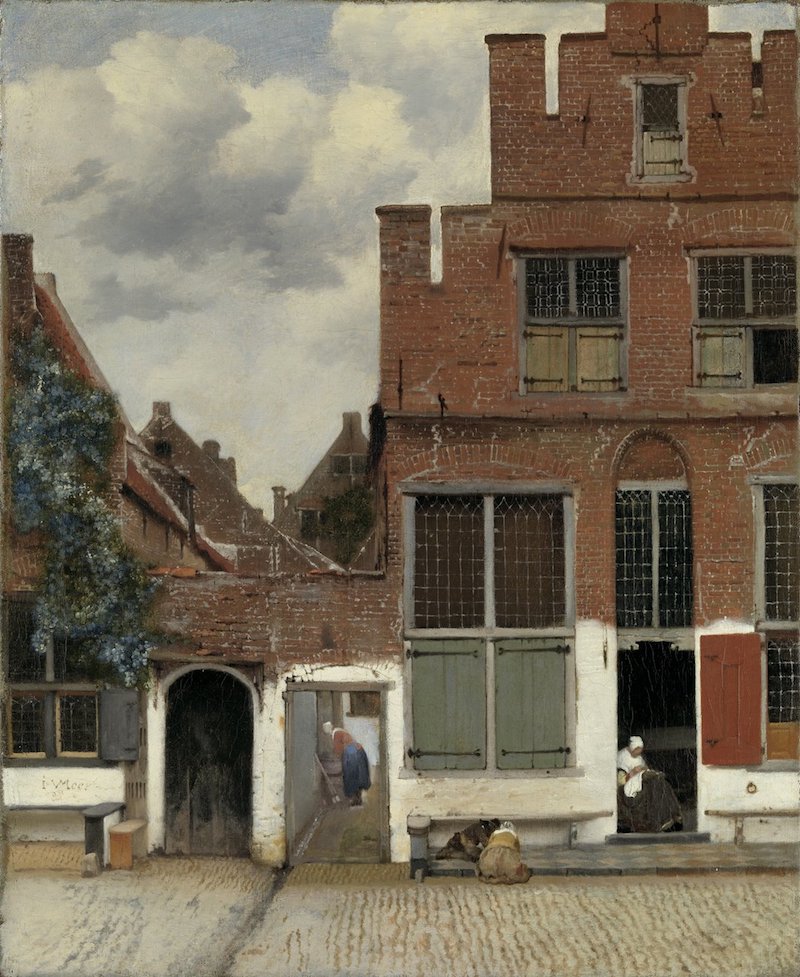
Vermeer, The Little Street (House in Delft), circa 1658, Rijksmuseum, Amsterdam
In addition to Delft, traces of Vermeer can also be found in The Hague. The Mauritshuis Royal Museum of Art, which has a collection of "Girl with a Pearl Earring", is located in the center of The Hague, next to the Prime Minister's Office, and a few minutes' walk to the final resting place of the Dutch philosopher Spinoza (Spinoza, 1632-1677) . The Mauritshuis acquired a painting entitled View of Delft shortly after its opening in 1822, mainly for local research interests - depicting a 17th century cityscape at the time works are very rare. Twenty years later, a French youth named Théophile Thoré (1807-1869) visited here. Torre was a radical, a self-confessed bohemian whose ambition was to change public taste.
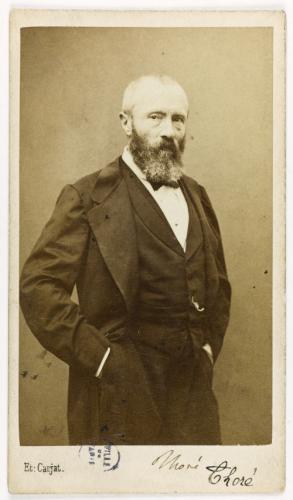
Théophile Torre, the discoverer of Vermeer two centuries later
Torre originally came to the Mauritshuis to admire Rembrandt, but was impressed by the View of Delft and became obsessed with finding its forgotten creator, who was in the area Searching for and buying what he called "trinkets" generally cost no more than a few Dutch guilders, and Vermeer attracted him the most.
We still don’t know how Vermeer attracted Torre, was it the austere and luxurious bohemian mix of empty walls and oriental rugs, or the attractive appearance of his characters?

Vermeer, A Glass of Wine, 1659-1661, Berlin State Museum
In a collector's attic, Torre found a bird painted by Fabrizias, perhaps because of the glowing walls and delicate brushstrokes in the background, which reminded Torre of Vermeer, and later this "Goldfinch" ” became one of Torre’s favorite collections. Today, that unassuming little painting is a jewel in the Mauritshuis, and Fabrizias is also known for Donna Tartt novels and Nicole Kidman films, but is It was Torre who discovered it and turned it from a "junkie" to a "masterpiece". "When it was restored, we found tiny dents that could have been caused by fragments of a gunpowder explosion in 1654," said Quentin Buvelot, senior curator at the Mauritshuis.
Because of Vermeer, Torre's collection began to attract attention, and some people soon realized the beauty of Vermeer. In 1881, "Girl with a Pearl Earring" was bought by Andries des Tombe, a collector in The Hague, for two Dutch guilders and bequeathed to the Mauritshuis Royal Museum of Art.
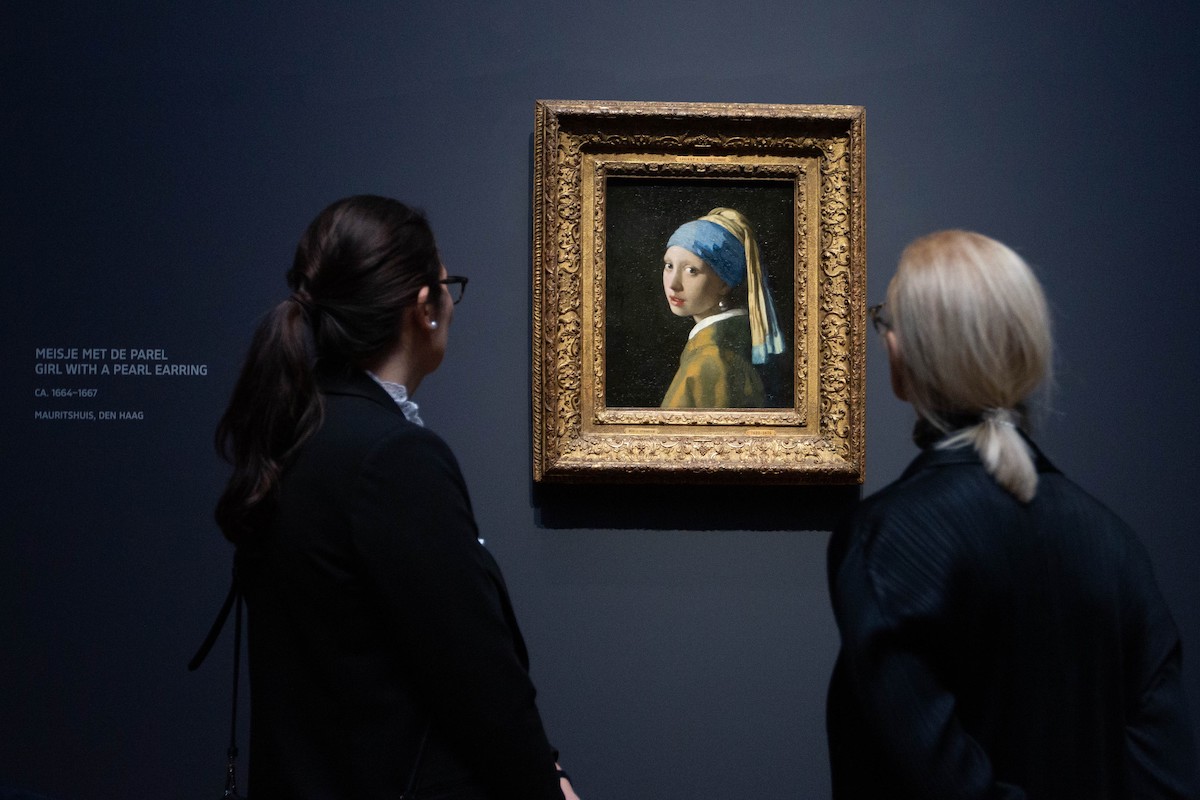
Exhibition view, "Girl with a Pearl Earring"
At present, 28 works of Vermeer, including "Girl with a Pearl Earring", are gathered in Amsterdam, and the audience is walking quietly in the exhibition hall.
In the painting, a girl in ermine, yellow velvet and lace, a man in a cloak and a beaver fur hat, they play musical instruments, read books and letters, without dialogue or sound, every wonderful moment is laid out in front of the audience.

Vermeer, Woman Holding a Balance, circa 1663-1664, National Gallery of Art, Washington
Vermeer borrowed from the interior of the Dutch genre painter Pieter de Hooch (1629-1684), showing the figures in a distinctive light, reading, writing, gazing, weighing in the space. Quantity... Vermeer's creation shows its long deliberation.

Vermeer, Woman Playing the Lute, 1662-1663, Metropolitan Museum of Art, New York
"Woman Playing the Lute" from the Metropolitan Museum of Art in New York is like a memory. The sheer curtains let the light shine from the side, illuminating the studs on the leather chairs, bright as stars. The woman in the painting dissolves in the halo of light, as if she herself is a secret.

Vermeer, "Lady in Blue Reading a Letter", 1662-1663, Rijksmuseum, Amsterdam
The "Lady in Blue Reading a Letter" (1662-1663) collected by the Rijksmuseum in Amsterdam has no windows, and the whole scene is filled with the blue of the skirt, as if it is an extension of her soul. The letter in her hand was like a ray of light. It may be the same girl as "Girl Reading a Letter by the Window" (1657-1658) from Dresden, only five years apart, and the girl is more profound. Perhaps Vermeer's daughter also appears in the work.
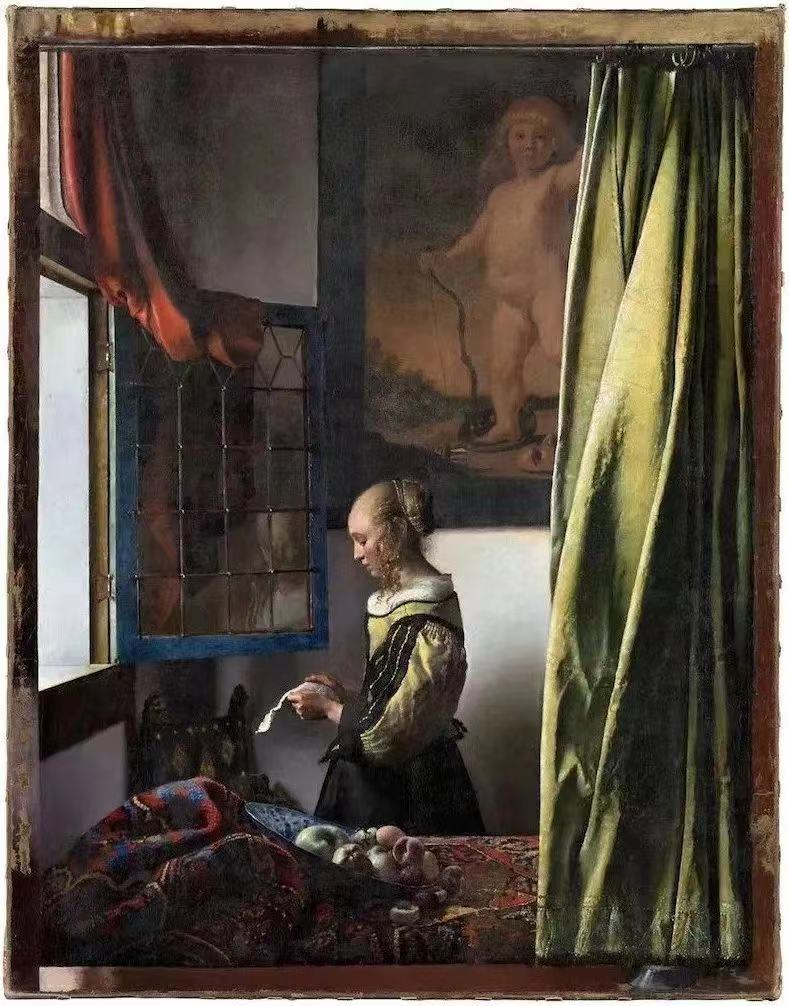
Vermeer, "Girl Reading a Letter at the Window", 1657-1658, Gallery of Old Masters, Dresden Collection, Germany
Vermeer's world stands still, as if suddenly frozen in the present. Back in Delft, stroll along the Wateringsevest canal that divides the old from the new. The New Town is a high-tech modern city filled with glass and chrome. What would Vermeer, who described "an introverted, serene world," think of this aesthetic?
At night, when the lights in the building come on, the eye is drawn to the vignettes around: the gardener pruning the stems, the baker covering the rest of the loaf—would Vermeer recognize these fleeting moments?
Note: This article is compiled from "A World of Miracles and Disasters: Exploring Vermeer and His Hometown" by Kevin Lashby of "The Guardian", Laura Cumming's "Vermeer Exhibition" review "The most exciting ever One of the exhibitions” and the website of the Prince Museum Delft; the exhibition will be on view until June 4.
